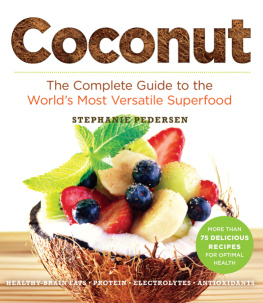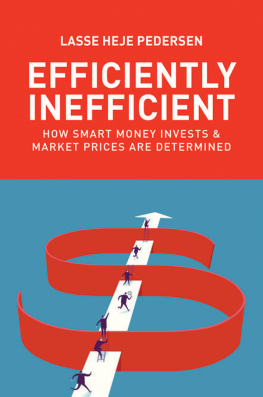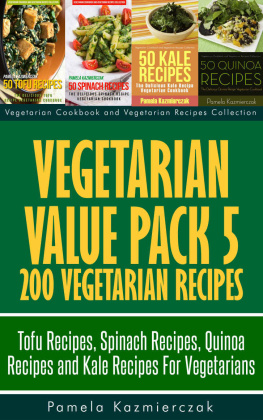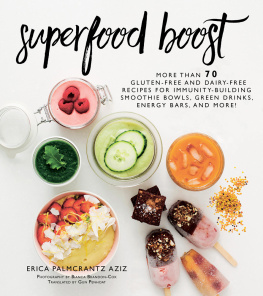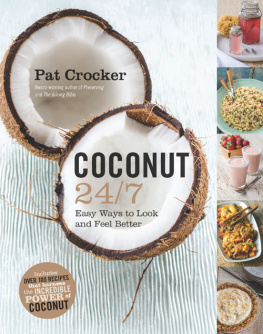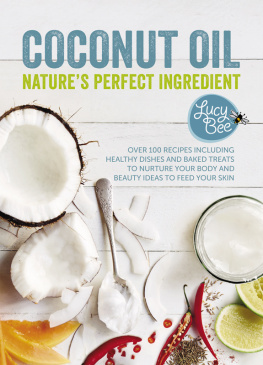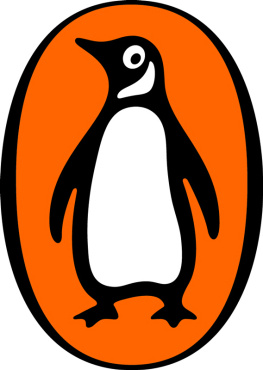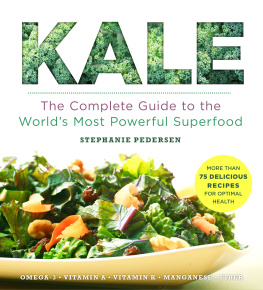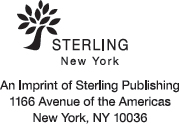STERLING and the distinctive Sterling logo are registered trademarks of Sterling Publishing Co., Inc.
Photo Credits: Cover and interior color photography by Bill Milne, Sterling Publishing; Additional interior credits: Corbis Images: Brownies Extraordinaire Radius Images; iStockPhoto: Strawberries, raspberries, blueberries AK2; Ice pops Aluxum; Open coconut Amriphoto; Chia pudding Bonchan; Open coconut with pieces Cislander; Blender Cjrfoto; Pumpkin Creativeye99; Bowl of beans Luigi DiMaggio; Popcorn DNY59; Coconut Cream Pie Duckycards; Open coconut next to bowls Floortje; Ice cream Christine Glade; Open avocado Hid_de; Vegan Oatmeal Cookies ADriene Hughes; Ginger root Hudiemm; Two halves of coconut iSailorr; Peanut butter Robyn Mac; Nuts Matejay; Lemons Ntstudio; Kale Ockra; Palm trees Songsak Paname; Simple tomato soup john shepherd; Bananas Joanna Pecha; Coconut with straw Pesky Monkey; Coconut with jar of spread and Large jar of coconut spread with half of coconut Picture Partners; Smoothie Princess Lisa; Shredded coconut Savany; Open jar of coconut spread sitriel; Cherry tomatoes Julia Sudnitskaya; Dates szefei; Pancakes Subjug; Cauliflower Syolacan; Coconut Plant taseffski; Dried coconut Alasdair Thomson; Coconut with pointed top Tiverylucky; Pumpkin seeds Watcha; Shutterstock: Pan with chicken DeeaF; Coconut with coconut pieces and pitcher Kitty.
All rights reserved. No part of this publication may be reproduced, stored in a retrieval system, or transmitted in any form or by any means (including electronic, mechanical, photocopying, recording, or otherwise) without prior written permission from the publisher.
INTRODUCTION
A s a young girl I lived in Australia, a place where coconuts are everywhere, even though they are not native to Australia and are not grown commercially there. In fact, they grow only sparsely along Ozs northern coast and yet, Australians eat coconuts in large quantities. Yes, Aussies are coconut lovers. Go Down Under and youll find the famous Anzac biscuits, coconut shortbread, lamingtons (small squares of cake dipped in chocolate and coated with coconut), coconut sponge, baked coconut pudding, Cherry Ripe chocolate bars (with cherries and coconut), and my favorite, Europe Apricot & Coconut bars, as well as other coconut-heavy sweets.
For me, as I was growing up, coconut was a delectable, sweet food that I associated with good times and treats. I didnt used to think of it as an ingredient that could be eaten in a wide range of dishes. And I certainly didnt grow up with the idea that coconut was good for you.
I was a child in the 1970s and 80s, a time of margarine, aspartame, and no-fat diets. Most people in Australia, the United States, and Europe (the cultures my family and I lived in) had never heard of coconut water, and we certainly didnt cook with coconut oil. The only dried coconut we ever saw was coated with sweetener and packaged in a blue plastic bag. And the idea of cooking with flour that wasnt made from wheat seemed unthinkable. In other words, it was a different time. In fact, I didnt see an actual, mature coconut until I was in my late teens, when my dad brought one home after winning it as a gag gift at work. It was only when I became an adult, and began regularly traveling to the West Indies, that I laid eyes upon a green coconut for the first time.
I dont think my coconut experienceor lack thereofwas uncommon.
My mother got her nutrition information from womens magazines, which told her that saturated fats were the enemyso out went red meat and butter. Tropical oils were shunned, too; nutrition experts from that time told us coconut oil was the most dangerous fat possible. Thus, entire generations grew up without coconut oil and ate foods made with more acceptable hydrogenated vegetable shortening and margarine instead.
The first time I was exposed to thinking about alternative fats was in my twenties, when I was working in New York City as a kitchen assistant at the Natural Gourmet Institute, the renowned whole foods cooking school, where revolutionary natural food chefs such as Peter Brearley, Myra Kornfeld Elliott Prag, and Diane Carlson taught. My job was twofold: to help cooking instructors get ready for class by prepping ingredients, and to ensure that their classes ran smoothly by performing the backstage work (everything from fetching ingredients for the instructor to washing dishes).
One particular day, during an introductory lesson on whole food ingredients, instructor Diane Carlson mentioned that studies were beginning to show that coconut oil and other coconut products had powerful healing properties and were not harmful to the heart, as many people believed at the time. She passed around a few handouts on heart disease rates in Southeast Asian and West Indian countries, where coconut oil, coconut milk, and coconut meat were consumed in large quantities, as opposed to Canada and the United States, where consumption of hydrogenated vegetable shortening and margarine were the norm. The studies showed that Southeast Asian and West Indian heart disease rates were low compared to those of the Western world.
This was new.
Wanting to get every drop of wisdom we could get on coconut oil, we kitchen assistants leapt into action: One of us took frantic notes while the rest of us continued chopping, stirring, and washing dishes.
After the class was over and wed cleaned the kitchen, we raced to a copy shop to photocopy our notes. We had a quest: find out everything we could about coconut oil.
We searched the cooking schools library shelves and pored over back issues of every healing and natural food magazine we could find. A few of us hit the public library. These were the early days of the Internet, so hopping online, as all of us did, and searching for Coconut Oil, led us straight to a bunch of alternative health websites that were so zealous, we couldnt be sure where enthusiasm wore off and accuracy began.
What I was looking for was reassuranceproof, eventhat I was not going to doom myself to a life of heart disease by regularly consuming coconut. Finally, I felt that Id read enough; I was convinced that the product was not health threatening, and I was ready to take the plunge. Unfortunately, finding coconut oil proved to be more challenging than unearthing reliable research.
One of my friends brought back an unmarked jar of coconut oil from a trip to Barbados. She had no idea if it was cold-pressed or if the coconut that was used to make the oil was organic, but at last we had some! We split the oil among the three of us and took it home.
The first thing I did with the coconut oil was make a vegetable curry, which I finished off with a cup of coconut milk. I figured if coconut oil was good for me, coconut milk must be, too! I had been using extra-virgin olive oil for everything prior to this; the coconut oil made the dish taste so much more authentic. It was absolutely delicious.

